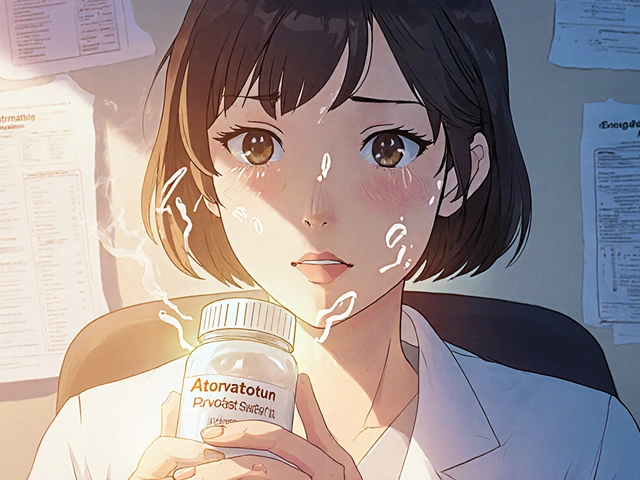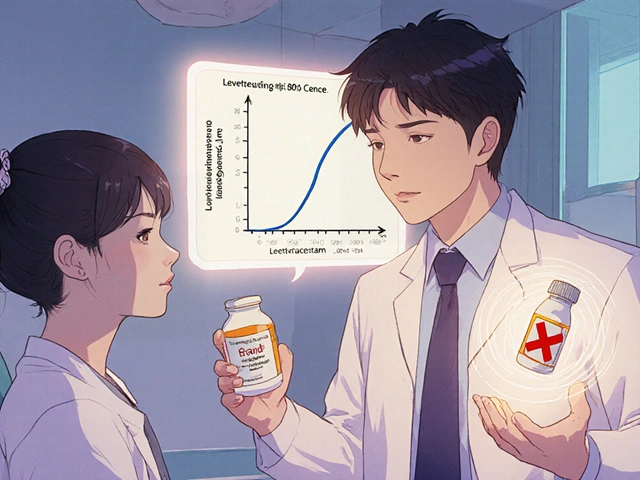Ask anyone to name a vitamin and odds are, vitamin C is the first thing that pops to mind. Ascorbic acid—that’s the fancy term for vitamin C on nutrition labels—has been legendary for ages. People use it to fight off colds, treat wounds, brighten skin, fortify their hearts, and even preserve a plate of apples from turning brown. It sounds like magic, but what actually happens inside your body when you get enough of it? And is popping supplements really necessary? Some answers may surprise you.
What Exactly Is Ascorbic Acid?
Let’s clear up the basic science first. Ascorbic acid, often called vitamin C, is a water-soluble vitamin found in fruits and vegetables, especially oranges, kiwis, strawberries, red peppers, and broccoli. Unlike most animals, humans can’t make their own. That means you absolutely have to get it from food or supplements—it’s not optional for your health. Chemically, it’s a six-carbon compound that acts as both an antioxidant (fighting off the bad effects of free radicals) and a coenzyme, meaning it helps important reactions happen in your body. Without enough, things break down fast: gums bleed, wounds don’t heal, you feel tired and irritable. Yep, that’s the old “scurvy” you heard about in pirate stories, and it can still happen if your diet lacks vitamin C for months.
Ascorbic acid is super sensitive. Cooking, light, and even oxygen can destroy it, so raw sources or lightly cooked veggies are best. The vitamin got its name from the Latin “a” (without) and “scorbutus” (scurvy)—literally meaning it prevents scurvy. Strangely, not every ‘C’ on the label is pure ascorbic acid; some foods use sodium ascorbate or calcium ascorbate, which work the same way but are easier on the stomach for some folks. In tablets or powder, ascorbic acid can taste a bit tangy—kind of like the punchy sourness in sour candies. For manufacturers, it’s also a natural preservative, protecting the color and flavor of foods from spoiling.
Here’s a quick look at some of the richest sources per 100 grams:
| Food | Vitamin C content (mg) |
|---|---|
| Guava | 228 |
| Red Bell Pepper | 128 |
| Kiwi | 92 |
| Strawberry | 59 |
| Orange | 53 |
| Broccoli | 89 |
If you like numbers: the recommended daily intake is around 90 mg for men and 75 mg for women. Smokers actually need about 35 mg more each day, since tobacco depletes vitamin C in the body.
Health Benefits: What Does Ascorbic Acid Really Do?
This is where things get interesting. Ascorbic acid supports so many functions, it’s almost hard to decide where to start. First up: immunity. Though it won’t keep every bug at bay, several real studies have shown that vitamin C can shorten the length and severity of colds, especially in people under physical stress (think: marathoners, soldiers, and skiers). It acts by supporting the production and function of white blood cells, the body’s attack squad against germs. It even helps your skin build its first line of defense, keeping out invaders before they get in.
Next, your blood vessels and organs rely heavily on vitamin C. It’s needed to make collagen, the sticky protein that holds your skin, bones, and connective tissue together. Without enough collagen, you bruise easily and wounds take longer to close. That’s why vitamin C serums are all over skincare shelves—they really can brighten skin, lighten dark spots, and improve healing, at least according to data from clinical trials on wound recovery.
Oxidative stress is the enemy behind lots of chronic conditions, including heart disease, some cancers, and even aging. As a powerful antioxidant, vitamin C neutralizes those damaging molecules and may help lower blood pressure slightly. Some researchers have linked high vitamin C intake with lower rates of strokes. One long-term study followed people in Japan and found that those with the highest vitamin C levels had 42% lower stroke risk than those with the lowest levels.
Then there’s iron absorption. Vegetable-based (non-heme) iron is harder for the body to grab than the type in red meat, but vitamin C helps transform it into a form your body can use. That’s why anyone with iron deficiency anemia is often told to take their iron tablet with a glass of orange juice—and it really works. Even a small squeeze of lemon over plant-based meals boosts iron uptake.
Your brain likes vitamin C, too. The vitamin helps synthesize neurotransmitters like dopamine and serotonin, which play a direct role in mood, focus, and memory. There’s some buzz that vitamin C protects your thinking skills as you age—the jury’s still out, but people with higher vitamin C levels tend to do better on memory tests.

Ascorbic Acid in Food: More Than Oranges
Oranges get all the spotlight, but they’re not the champion when it comes to vitamin C per bite. Guava, red bell peppers, chili peppers, and even black currants can pack a bigger punch. And did you know that just half a cup of raw chopped red pepper gives you more than your whole daily need? That’s better than two oranges put together. The trick is “fresh is best,” because as soon as you chop a fruit, vitamin C starts to break down.
If you want to get creative, try some of these snack ideas for a vitamin C boost that’s not the same tired glass of juice:
- Slice up strawberries or kiwi over Greek yogurt.
- Enjoy a raw veggie tray with bell peppers, broccoli, and snap peas.
- Add pineapple chunks to spicy salsa for tacos.
- Make guacamole with lime juice (surprise—the lime adds vitamin C, too!).
- Blend a smoothie with kale, mango, and a splash of lemon juice.
Don’t forget about cooking. The more you boil, fry, or bake, the less vitamin C that stays behind. Steaming or microwaving (with little or no water) is your friend here. Even storing fruits at room temperature for a few days drops their vitamin C levels. So buy small amounts often, and keep them in the fridge. Skipping peels is common, but citrus peels and zest contain a surprising amount of vitamin C. Sprinkle a little zest onto oatmeal, salads, or baked goods—it really works (and tastes zingy, not bitter).
Canned and frozen fruits hold onto their vitamin C better than you’d think—if they go straight from picking to packing, which is usually the case. That means your freezer bag of strawberries or broccoli florets can be just as good as fresh when it comes to this vitamin. Just avoid fruit syrups that are heated for a long time. Dried fruits and juices lose quite a bit in the processing. So if you’re aiming for vitamin C, reach for the fresh or quick-frozen options first.
Supplements: Do You Need More Ascorbic Acid?
You’ve probably stood in an aisle, squinting at bottles of vitamin C, wondering if you need extra. Here’s the truth: most healthy adults who eat a variety of foods get plenty just from fruits and vegetables. But certain people may need more—smokers, pregnant or breastfeeding women, those with certain chronic diseases, or people with poor diets (like the classic college student menu of ramen noodles and fast food). For these groups, a daily pill can help fill a gap.
The body can’t store vitamin C, so if you take way more than needed, your kidneys just flush it out. That’s why megadoses (like 1000 mg a day) won’t turn you into a disease-fighting superhero; instead, you risk an upset stomach or, if you’re prone, kidney stones. Symptoms of too much are mild—nausea and diarrhea—but they’re not fun. More isn’t always better. If your goal is gorgeous skin, taking huge doses orally won’t deliver more to your skin cells. Applying C-serums directly to your face spreads the goodness where it’s needed. And studies back it up: skin absorbs vitamin C best at concentrations between 10% and 20% in serums. Above that, the skin gets saturated and any excess won’t help.
A few supplement tips:
- Look for plain ascorbic acid or ascorbate forms, without lots of added sugar or color.
- Take vitamin C with meals for better absorption.
- If you have stomach trouble, try “buffered” versions (sodium or calcium ascorbate).
- Store pills or powders in a cool, dark place—heat and sunlight break down the vitamin.
Some multivitamins boast “natural” vitamin C from rose hips or acerola. Sounds nice but there’s actually no scientific evidence that these work better in the body than the lab-made stuff—they’re chemically identical.

Popular Myths and Surprising Facts about Ascorbic Acid
Vitamin C cures colds! Take more for glowing skin! Mega doses for cancer prevention! It’s wild how this vitamin has taken on a life of its own in beauty and health culture. But what does the evidence really say?
- Can vitamin C cure a cold? No, but it can make your symptoms milder and shorter if you take it regularly—not just when you feel sick. That’s the verdict from dozens of studies.
- Does it help with allergies? There’s some weak evidence for it reducing histamine levels, but don’t toss out your allergy meds yet.
- Is more vitamin C always harmless? Not quite. While the body flushes out excess, people with kidney disease or a history of stones should check with their doctor before taking big doses.
- Can it really fight wrinkles? Topical serums show moderate improvement in skin texture and dark spots, but results aren’t instant. Diet matters just as much.
- Does heating always destroy it? High heat rapidly reduces vitamin C, but short cooking—like quick steaming—still preserves a decent amount.
- Vitamin C for wound healing: Actually true, especially for big injuries or after surgery. Hospitals even use IV vitamin C for burn patients in some cases.
- Mega doses prevent cancer? No solid proof. Some experimental studies suggest vitamin C may slow cancer cell growth in test tubes, but human bodies are a lot more complicated.
Want one more weird fact? In the 1700s, British sailors were called “limeys” because they carried barrels of limes on ships to prevent scurvy. It worked—and saved thousands of lives.
Don’t chase fads: getting vitamin C from a rainbow of fruits and veggies does more for your body than any pill ever could. Make it part of your daily habits—not just when you’re sniffling—and you’ll reap real benefits, inside and out.








Posts Comments
Edward Batchelder June 27, 2025 AT 04:37
Ascorbic acid isn't magic-it's biology. I've seen people pop 1000mg pills daily and still get sick, while others eat a rainbow of fruits and stay resilient. It's not about the dose, it's about the foundation. Your body doesn't need a firehose of vitamin C; it needs consistent, real food. Stop treating supplements like candy and start treating meals like medicine.
Elizabeth Choi June 27, 2025 AT 16:04
The study cited about stroke risk reduction? That was observational. Correlation ≠ causation. Also, the population was Japanese-genetics, lifestyle, and diet differ drastically from Western populations. Don't extrapolate. The evidence for vitamin C preventing chronic disease is weak at best.
Iives Perl June 29, 2025 AT 12:57
They don't want you to know this... but vitamin C is used in vaccines to stabilize them. That's why Big Pharma pushes supplements-they make you think you're in control. Meanwhile, your immune system gets trained to rely on pills, not real immunity. Read the FDA's 2018 white paper on synthetic ascorbic acid and immune modulation. It's suppressed. 🤫
Savakrit Singh June 30, 2025 AT 01:09
It is imperative to note that the bioavailability of ascorbic acid is significantly influenced by gastrointestinal pH and concurrent nutrient intake. In Indian dietary contexts, where high-carbohydrate meals dominate, the absorption efficiency of non-heme iron is enhanced by vitamin C, thereby mitigating iron-deficiency anemia-a public health concern in rural regions. Hence, dietary integration remains paramount.
Jebari Lewis June 30, 2025 AT 17:50
Wait-did the article just say that guava has 228mg per 100g? That’s insane. And I’ve been eating oranges like they’re going out of style. I need to recalibrate my entire diet. Also, why is no one talking about the fact that vitamin C is a cofactor in dopamine synthesis? That’s literally brain chemistry. I’ve been depressed for years and never connected it to my lack of bell peppers. This changes everything. I’m buying a juicer tomorrow.
sharicka holloway July 1, 2025 AT 23:23
I started adding lemon zest to my oatmeal last winter and haven't had a cold since. Not saying it's the only thing-but it's cheap, easy, and tastes good. No pills. Just real food. Also, your skin glows when you eat more fruit. Not because of serums. Because your body's working right.
Alex Hess July 3, 2025 AT 18:29
Another vitamin C cult post. People still believe this? You know what actually prevents scurvy? Not oranges. Not supplements. Eating meat. Organ meats. Liver. Vitamin C is nice, but it's a bandaid for a diet that’s full of processed carbs and zero nutrient density. Stop pretending fruit is a health panacea.
Leo Adi July 5, 2025 AT 14:58
In India, we’ve known for centuries that amla (Indian gooseberry) is the real king of vitamin C-over 600mg per 100g. But we don’t sell it in Western supermarkets because it doesn’t fit the pretty orange narrative. Also, in monsoon season, we eat raw green chilies with rice. Not for spice-for immunity. Simple. Effective. No marketing.
Melania Rubio Moreno July 7, 2025 AT 06:29
why do people think vitamin c is only in oranges?? like bro i eat bell peppers like chips and i dont even like them but i do it for the c
Gaurav Sharma July 8, 2025 AT 07:19
It is a well-documented fact that the human body cannot synthesize ascorbic acid. Therefore, the claim that dietary intake is 'not necessary' is biologically indefensible. The assertion that supplements are 'unnecessary' for healthy adults is dangerously misleading, especially in urban populations with poor fruit and vegetable consumption.
Shubham Semwal July 10, 2025 AT 05:09
Everyone’s talking about oranges and bell peppers like they’re the only options. What about acerola cherries? They’re 10x stronger than oranges and you’ve never heard of them because Big Pharma doesn’t own them. Also, if you’re taking a supplement and not getting diarrhea, you’re not taking enough. You’re wasting your money.
Sam HardcastleJIV July 11, 2025 AT 11:19
The reductionist narrative surrounding ascorbic acid obscures the broader epistemological framework of nutritional science. To attribute physiological outcomes to a single micronutrient is to engage in a form of reductionist fallacy, one that neglects the systemic interplay of macronutrients, microbiota, and environmental epigenetics. One must ask: Is the vitamin, or the context, the agent of change?
Miriam Lohrum July 12, 2025 AT 23:29
It’s fascinating how we’ve turned a simple nutrient into a moral test. Eat your veggies? You’re virtuous. Take a pill? You’re lazy. But what if someone lives in a food desert? What if they’re working two jobs and can’t chop bell peppers every night? The shame around supplements ignores systemic inequality. The vitamin doesn’t care how you get it. Your body just needs it.
Rhiana Grob July 13, 2025 AT 08:52
I love how this post doesn’t just list facts-it shows you how to live with them. I used to think vitamin C was just for colds. Now I sprinkle lime zest on my lentils, snack on strawberries instead of chips, and steam my broccoli for 3 minutes. Small changes. Big difference. My skin feels better. My energy’s steadier. It’s not a miracle. It’s just… better living.
Frances Melendez July 14, 2025 AT 19:12
Anyone who thinks vitamin C supplements are harmless is either naive or lying to themselves. I know someone who took 3000mg a day for a year and ended up with kidney stones. And now they blame ‘bad luck.’ No. It was the pills. Stop glorifying megadoses. You’re not a superhero. You’re just dehydrated and in pain.
reshmi mahi July 15, 2025 AT 20:09
USA thinks they invented health. We’ve been eating amla and moringa for 5000 years. Your bell peppers are cute. 😌
laura lauraa July 16, 2025 AT 02:28
And yet, despite all this evidence, the medical establishment still refuses to acknowledge that vitamin C can be administered intravenously to treat sepsis, and that the FDA has blocked clinical trials on it for 'lack of commercial viability.' You think this is about science? It’s about profit. The truth is buried under patent law and pharmaceutical lobbying.
Gayle Jenkins July 16, 2025 AT 22:00
You’re not alone if you’ve been ignoring bell peppers. I used to think ‘vitamin C’ meant orange juice. Then I tried roasting red peppers with garlic and olive oil-game changer. I started adding them to eggs, pasta, even sandwiches. Now I crave them. Your body will tell you what it needs-if you stop ignoring it. Start small. One pepper a week. Then two. Then daily. You’ll feel it.
Kaleigh Scroger July 18, 2025 AT 14:33
Let’s talk about the real issue: most people don’t know how to store or prepare vitamin C-rich foods properly. I’ve seen people buy red bell peppers, leave them on the counter for a week, then complain they’re not getting enough. The vitamin degrades fast-within 24 hours of cutting, you lose up to 30%. And if you boil broccoli for 10 minutes? You might as well be eating cardboard. Steaming for 4 minutes preserves 80% of the vitamin. Microwaving with a splash of water? Even better. And don’t peel citrus-zest is gold. I keep a microplane next to my cutting board and grate it on everything. Salads, oatmeal, yogurt, even tea. It’s not a gimmick. It’s science. And it’s free. No pills needed. Just attention.
Write a comment